 |
 |
 |
| |
Lifestyle Program Yields Modest
CVD Benefits in HIV+ South African Women
|
| |
| |
IAS 2023, July 23-26, 2023. Brisbane
Mark Mascolini
A simple, inexpensive lifestyle intervention for South African women with HIV led to more exercise, a healthier diet, gains in "good" high-density lipoprotein (HDL) cholesterol, and lower blood glucose [1]. But the program did not change the course of obesity, while dietary practices and physical activity levels remained suboptimal.
Compared with men, South African women have higher odds of metabolic syndrome (central obesity, high blood pressure, and abnormal lipids and blood glucose) and a resulting doubled risk of cardiovascular disease (CVD). In fact, CVD has displaced HIV infection as the leading cause of death in South African women, according to researchers from the University of KwaZulu-Natal who conducted this study.
To address these problems, these researchers launched the Integration of Cardiovascular Disease Screening and Prevention in the HIV Management Plan for Women of Reproductive Age (ISCHeMiA) study, a prospective two-arm trial of South African women from 18 to 50 years old and in HIV care for more than 1 year. The study took place in the periurban Umlazi township in KwaZulu-Natal, a South African province with the second-highest HIV prevalence in the world.
Trial participants made annual study visits from November 2019 to February 2022, a period spanning the COVID pandemic and a change in South African antiretroviral guidelines to favor the integrase inhibitor dolutegravir. The new guidelines also recommend CVD risk assessment when antiretroviral therapy (ART) begins but advise measuring lipids only if starting a protease inhibitor.
Women in the intervention arm had CVD risk factors assessed through a WHO STEPS-based questionnaire and got screened for obesity, hypertension, diabetes, and lipids. All intervention-arm women got a handout with lifestyle modification advice, and clinicians emphasized that advice at study visits. Women with a high body mass index (BMI), hypertension, diabetes, or high lipids got referred to a dietitian. Women in the control arm received a standard-of-care workup and HIV management. Intervention-arm participants received care at a research clinic, while controls attended primary healthcare clinics.
Among 372 women enrolled in the trial, 149 in the intervention arm and 120 in the control arm got included in the end-of-study analysis after about 32 months of follow-up. In this analyzed group, women in the control group were older than those in the intervention arm—average 37 and 35. ART durations averaged about 7 years in the control group versus just under 6 years in the intervention arm. Proportions of women who were pregnant or recently delivered stood at 12% in the intervention group and 17% in controls. All women were of Africans descent and large majorities in both groups had a viral load below 50 copies. While 60% of women took an efavirenz-based combination when follow-up began, almost 40% switched to dolutegravir by the end of the study.
Statistical analysis adjusted for baseline age, smoking, BMI, diagnosis of hypertension and diabetes, systolic blood pressure, ART duration, and CD4 count identified three factors that independently distinguished the intervention group from the control group by risk ratio: Women in the intervention arm were significantly more likely to have a healthy diet, significantly less likely to exercise fewer than 30 minutes per week, and significantly less likely to have blood glucose above 5.6 mmol/L (100 mg/dL). Primary outcomes of metabolic syndrome and low-density lipoprotein (LDL) cholesterol above 3 mmol/L (116 mg/dL) did not differ between the two groups.
Comparison of average absolute differences between study arms identified significant advantages for three factors in the intervention group: minutes of exercise weekly, blood glucose, and waist circumference. The researchers noted that despite reports of more frequent exercise in the intervention group, exercise levels "barely reached" a target of 150 minutes per week in that group. And at the end of the study, average BMI, waist circumference, and the inflammation marker hsCRP remained high in both study arms.
Looking only at changes within the intervention group from baseline to the end of study, the researchers noted significant improvement in HDL cholesterol from abnormal to normal levels. But both average waist circumference and BMI rose significantly during the study. The investigators noted 4 new cases of diabetes by the end of study, 1 in the intervention arm and 3 in the control arm. Only 52% of participants referred to a dietitian saw a dietitian during the study period.
Qualitative analyses 1 year after enrollment revealed several barriers to lifestyle changes recommended in this trial: financial constraints, work, lack of social support, poor body image, and lack of insight into CVD risk. Switching to dolutegravir during the trial had no significant impact on BMI, blood pressure, or metabolic syndrome.
The researchers believe their study confirms potential CVD benefits through lifestyle modification and regular screening in a South African population marked by poverty, poor access to healthy food, and lack of safe places for physical activity. They characterized these benefits as "modest" in their study group, noting significant gains in average waist circumference and BMI in the intervention group.
Reference
1. Hanley S, Moodley D, Naidoo M, Brummel S. Effects of lifestyle modification and annual screening in the prevention of cardiovascular risk factors in South African women with HIV. IAS 2023, July 23-26, 2023. Brisbane.
----------------------
Effects of lifestyle modification and annual screening in the prevention of cardiovascular risk factors in South African women with HIV
IAS 2023 july 26
Co-auteurs
S. Hanley1, D. Moodley2, M. Naidoo1, S.S. Brummel3 1University of KwaZulu-Natal, Family Medicine, Durban, South Africa, 2University of KwaZulu-Natal, Obstetrics and Gynaecology, Durban, South Africa, 3Harvard T.H. Chan School of Public Health, Boston, United States
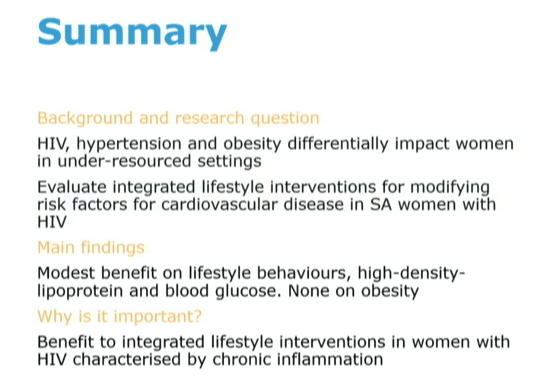
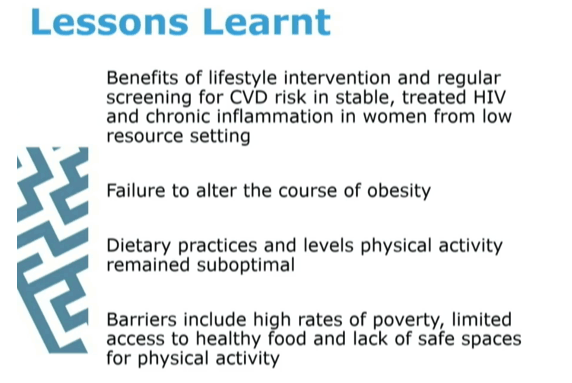
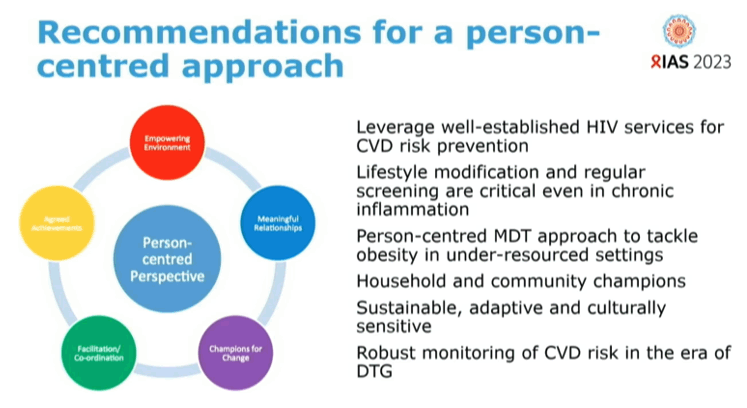
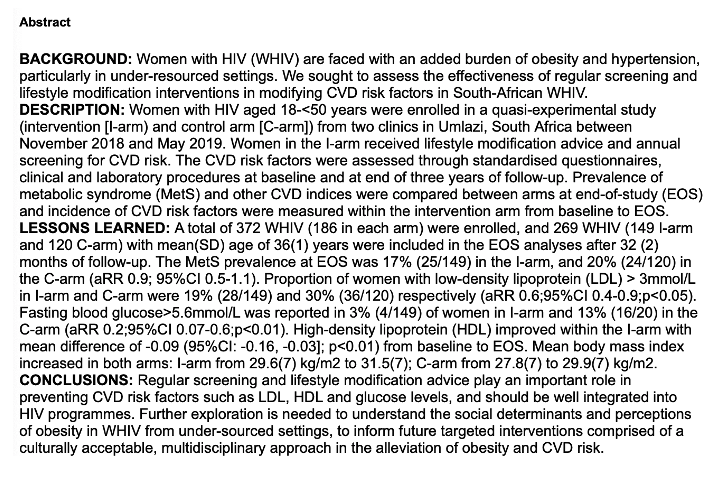

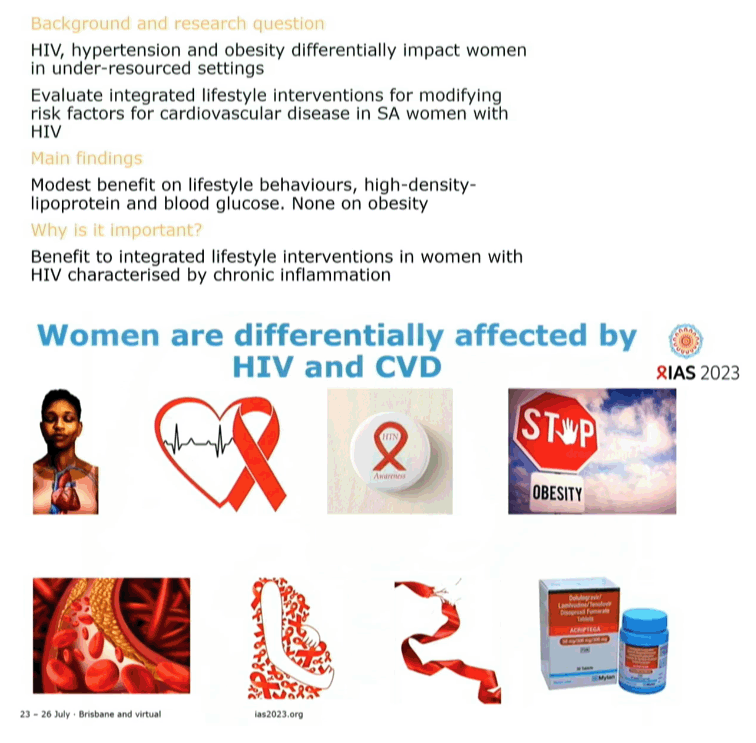
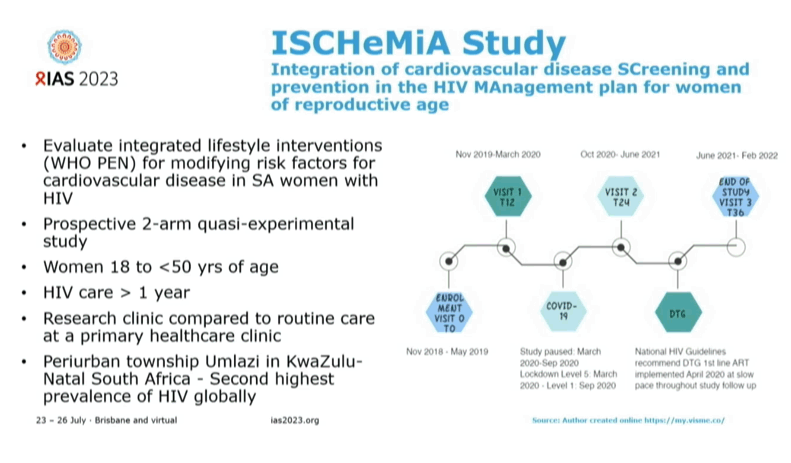
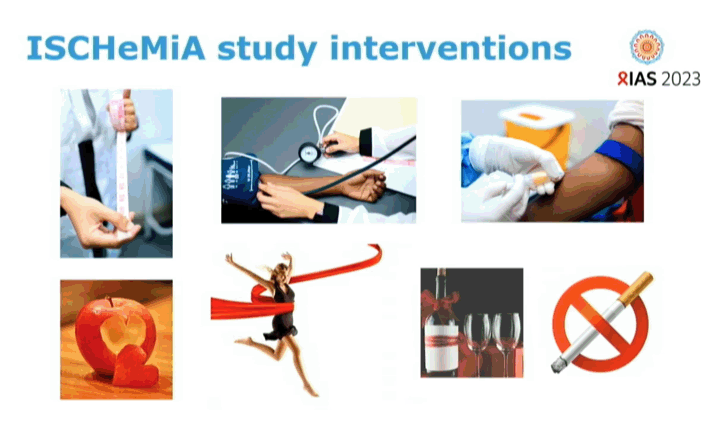
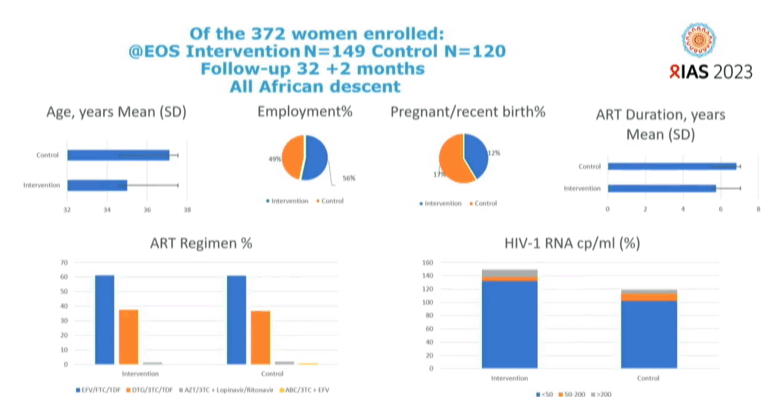
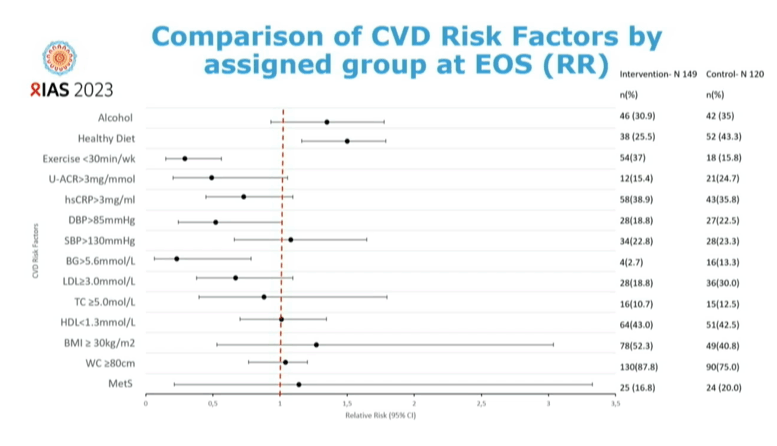
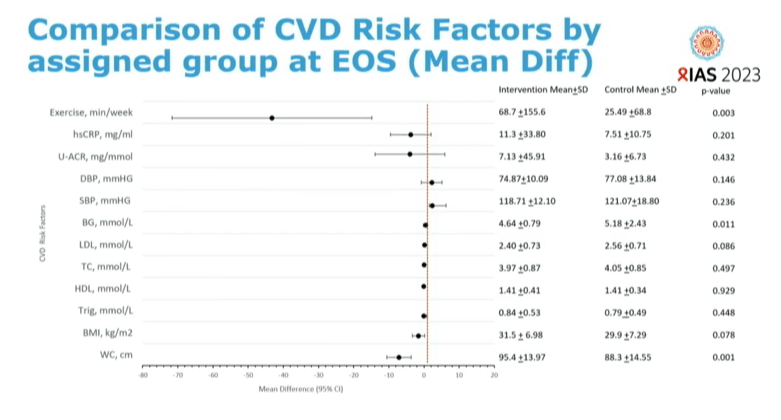
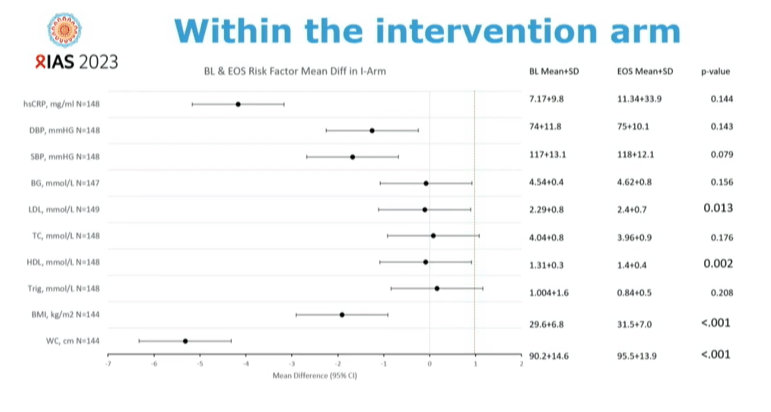
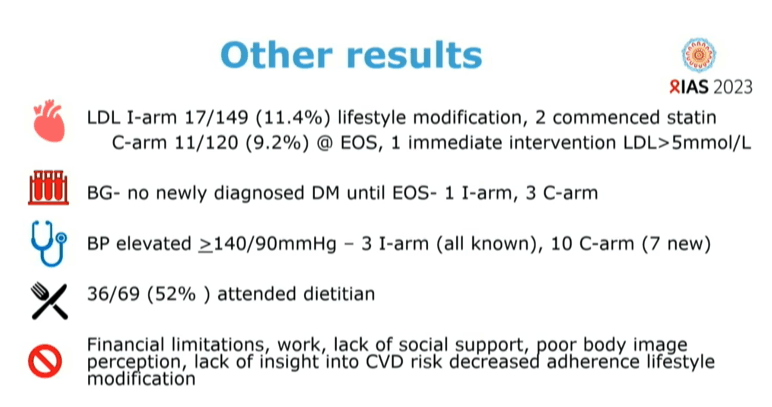
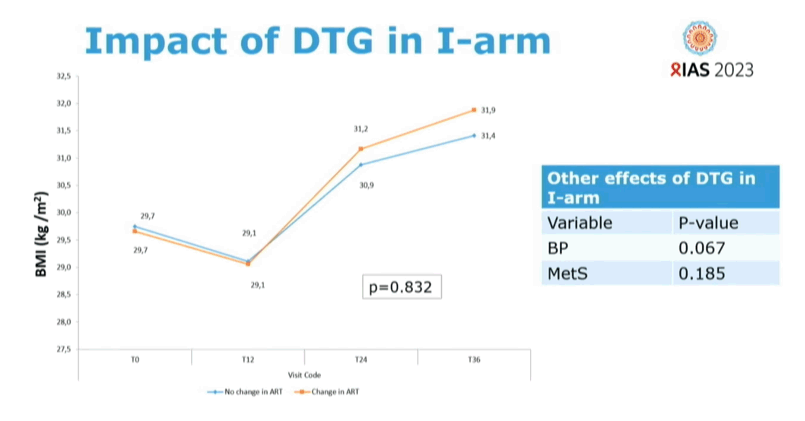
|
| |
|
 |
 |
|
|